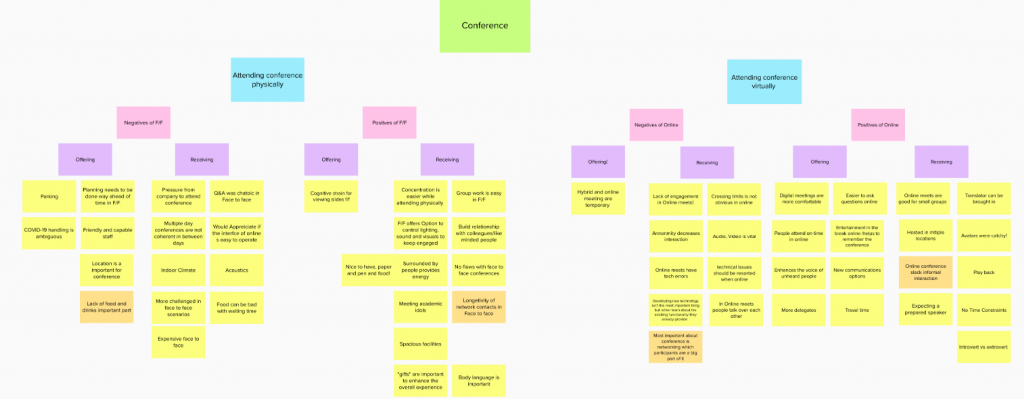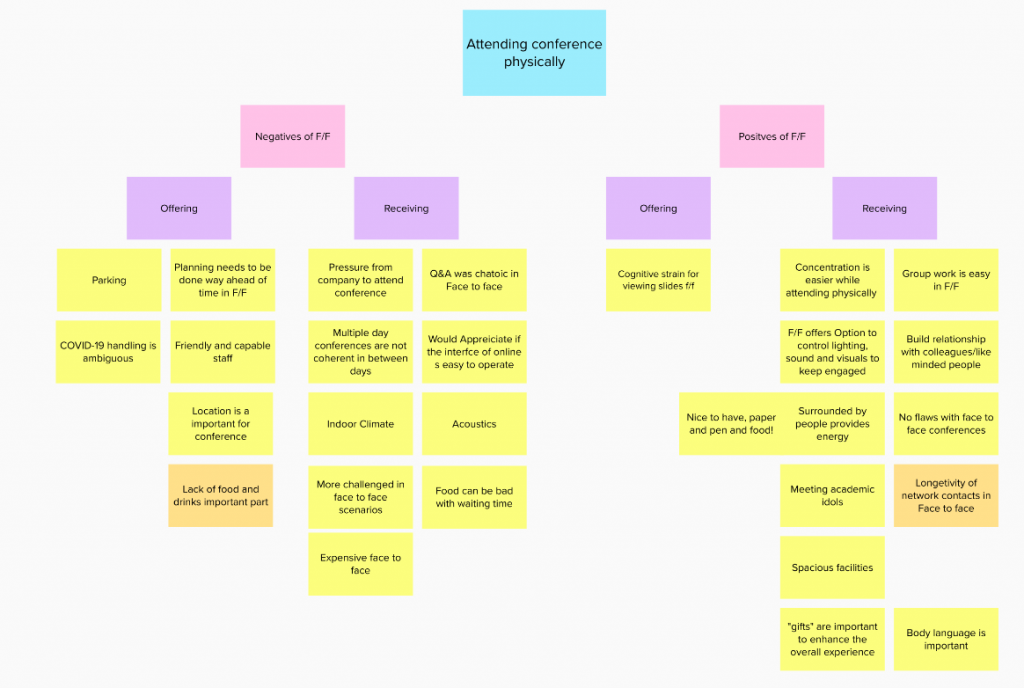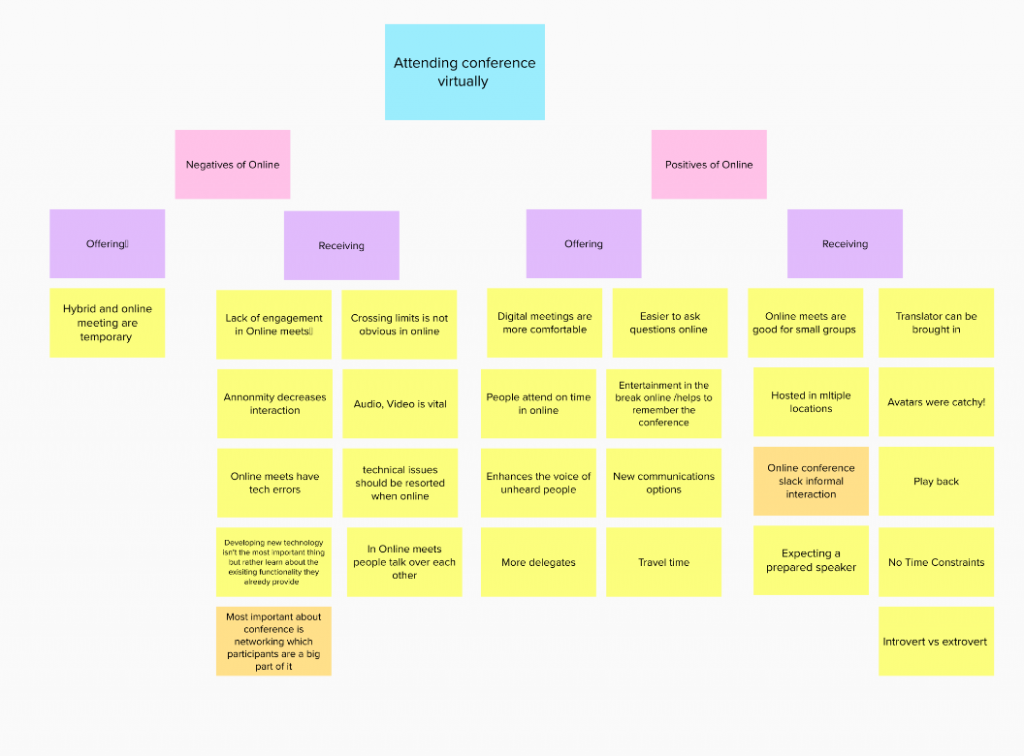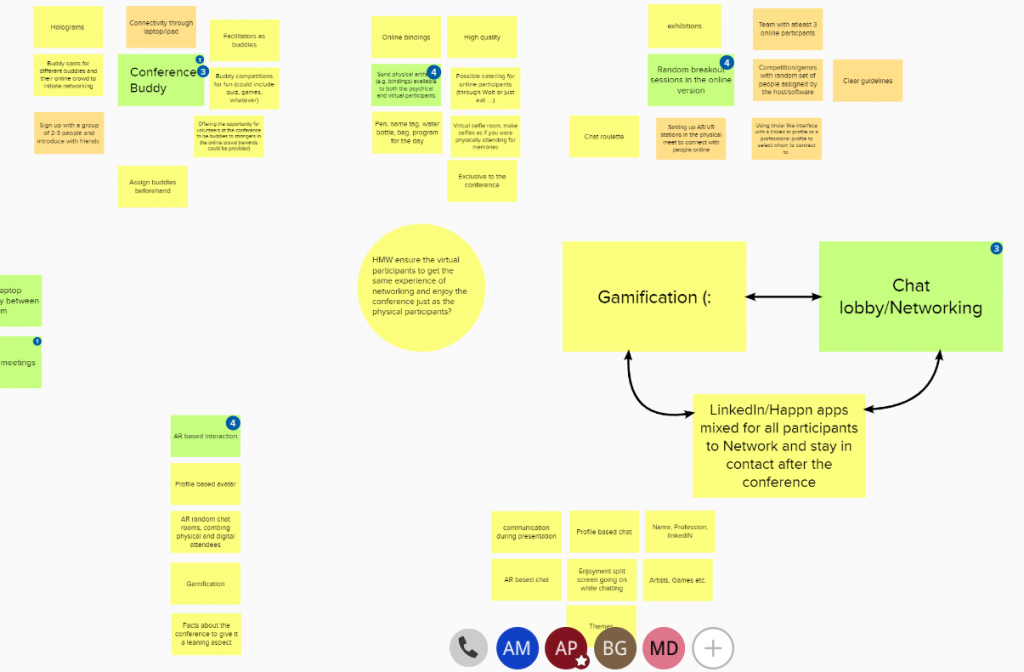Case partner: Aalborg Congress & Culture Center (AKKC)
Team members:
Abina Mahalingam
Alexander Munk Petersen
Benjamin Ghoula
Helin Sindi
Heriharan Veeravalli Srivathsan
Magor Demeter
Thursday 05/11 Final concept video
The Design Process
Monday 26/10 – Case partner meeting
Day one began with an introduction to the virtual-Ucrac workshop. Shorty after, we were divided into teams and we quickly got to know each other. A few moments later, our team was introduced and assigned to the case, collaborating with Aalborg Congress & Culture Center along with three other groups. All groups working with AKKC came together to prepare for the initial interview with the case partner, which was held Zoom and from there we were given the foundation for future work.
Tuesday 27/10 – Data collection
The second day started off with a lecture in ´framework for involvement´ and ´jobs to be done´. The primary goal for day two was, to lay out the groundwork for our groups research design. This was done by, first looking into the stakeholders of AKKC. Our team chose to divide stakeholders into two groups: receiving and offer side. We concluded that the receiving side consisted of large organizations and the participants. Moreover, the offering side consisted of AKKC themselves and their external partners.
After analyzing the stakeholders, we started scheduling how we´re going to collect the data. With an exploratory mind-set we decided that each group-member will conduct data from our individual inner circle and thereby seek to find informants who been to a conference before. As a team we quickly began preparing a semi-structured interview guide, ultimately because we wanted to ask the same questions so the questions were comparable for the data handling process. Furthermore, we also have our initial physical meeting with AKKC tomorrow. Two group members will be attending, and they have prepared a more unstructured interview approach.
Wednesday 28/10 – Execute research design
The primary focus for this day, was each team member gathered individual data, by interviewing people in our own network. This was completed by convenience sampling.
Seven interviews were conducted, plus a walk along with our case partner AKKC at their location. Where we got the chance to look at the facilitate and discuss the problems stated more in depth. Furthermore, a company analysis was constructed and some desktop research.
Thursday 29/10 – Exploring and interpreting data
The process of constructing an affinity diagram, began with writing each statement down on post it notes, from the conducted interviews. Thereafter we began deleting duplicates and based on similar statements we started grouping them together based on their natural relationship to provide a more structured overview of the collected data. Furthermore, the affinity diagram was approached by working bottom up, to ensure we didn´t force each statement into a group we made up ourselves, but instead we interpreted each cluster with and overall theme based on the statements within the cluster.
The final Affinity Diagram can be seen on figure below, including a zoomed in view on each side of the clusters.



Quick explanation of the Affinity Diagram. The main category of the diagram is conference(green note), which is divided into two sub-categories: Attending conference physically and virtually accordingly (light blue note). The Sub-Categories is then further divided into negatives and positives aspect of their main category as illustrated on the figure(light red note). Yellow notes consist of interpreted data or quotes from the conducted interviews. The orange notes are collected data from a conference speaker.
Friday 30/10 – Coredesign
This morning we had an introduction to Coredesign and after that we met on Teams to continue with our case. With the Affinity Diagram ind our minds we chose to come up with cores that would be interesting for our case. We voted for those cores that would be relevant for our case and continiued with 5 cores in total:
Networking, Enjoyment, Online quality, Audience engagement and Hybrid architecture.
For each of these 5 cores we discussed what there quality criterias could be. After defining them we prepared a presentation to our case partners so they could get a overview look on what our solutions looks so far and why.
After our meeting with our case partners we were told to focus on these 2 cores: Networking and Enjoyment. Networking because it is one of AKKC’s main focus. We shouldn’t focus on the technial aspect as this was one of the easiest one for them.
We will therefor continue with the 2 main cores.

Monday 2/11 – Ideation
This morning we had an introduction to How Might We (HMW) questions as we were entering the solutions phase and have to transform our quality criterias from friday to specific solutions to our case.
After the introduction we met on Teams where we each came up with 3 HMW questions. We discussed all 8 questions’ qualities and refined one, as this was the best questions: HMW ensure the virtual participants to get the same experience of networking and enjoy the conference just as the physical participants?
This will be our final HMW question.
After choosing this we continued with creating new ideas as the basis for this question. We had a lot of ideas so we chose to narrow it down by voting for 5. The 5 ideas we chose to stick to is: Conference buddy, Random breakout sessions in the online version, AR based interaction and Chat lobby.
To each of these 5 ideas we continued with creating 6-8 ideas to each, so we could brainstorm thoughts/aspects that would be relevant and interesting for each.
After brainstorming ideas we chose to discuss them and narrow them down by looking for ideas that were dominant.
These ideas were dominant: Gamification, Chat lobby/Networking and LinkedIn/Happn apps mixed for all participants to network and stay in contact after the conference.
These 3 ideas are the ones we want to work with as a part of our HMW question.

Tuesday 3/11 – Prototyping and video design.
This morning we had an introduction to prototyping and how to use video as a design tool. We were introduced to different kinds of videos and animations that were used in previously in U-Crac cases by former students.
After the introduction we met on Teams to discuss which kind of video design tools we were gonna use and what scenarios from our case that would be relevant to show.
After we had determined the 3 scenarios (will be uploaded tomorrow) we began to prototype and make a scenario on a storyboard so we can showcase what happens on the storyboard. The showcase naturally overlaps with the prototype.

